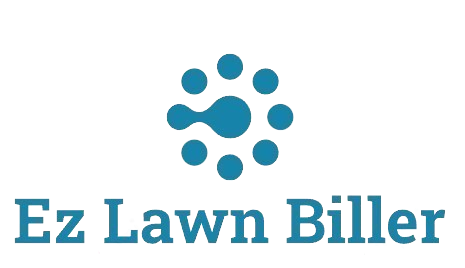Optimize routes Best Practices for Lawn Care Pros
In the competitive landscape of lawn care, optimizing routes is essential for maximizing efficiency and minimizing costs. This blog post will explore best practices for lawn care professionals to enhance route planning, ensuring timely services and satisfied customers.
Introduction
As a lawn care professional, time and resource management are crucial for success. Optimizing your routes not only saves fuel and labor costs but also enhances client satisfaction through prompt service delivery. In this article, we will dive deep into the best practices for route optimization, including tools and strategies tailored for lawn care pros. Whether you’re an independent operator or running a larger business, implementing effective routing techniques can significantly improve your bottom line.
Understanding Route Optimization
Route optimization refers to the process of determining the most efficient path to reach multiple destinations. For lawn care businesses, this involves organizing client appointments and service locations to ensure that drives are minimized and scheduling is maximized. According to a study by the American Transportation Research Institute, businesses can save up to 15% on fuel costs simply by refining their routes.
Incorporating route optimization strategies is particularly beneficial during peak seasons when demand for lawn care services surges. By planning well-organized routes, lawn care professionals can cover more ground, serve more clients, and enhance their service efficiency. For instance, using lawn billing software can simplify the scheduling process, ensuring that all necessary data is organized before setting out for the day.
Employing Technology for Route Planning
The advent of technology has revolutionized how lawn care professionals approach route planning. There are various tools and applications designed to assist with optimizing routes, such as GPS navigation systems and specific lawn service software. These tools allow users to input multiple addresses and provides the quickest and most efficient path.
For example, using a lawn service app that integrates with GPS technology can significantly reduce travel time, allowing professionals to focus more on providing quality services instead of driving. Furthermore, features such as real-time traffic updates can help avoid congested areas, ensuring timely arrivals at client locations. By harnessing these technologies, lawn care companies can maintain high levels of service, critical for client retention.
Zone-Based Scheduling
Another effective strategy for route optimization is zone-based scheduling. This involves dividing your service area into manageable zones based on geographic proximity. By organizing your client base within these zones, you can minimize travel distances and time spent on the road. For instance, if you service several neighborhoods in a city like Denver, grouping clients by their proximity allows you to tackle an entire area in one trip.
Implementing zone-based scheduling is not merely a matter of convenience; it can also lead to significant savings on fuel and vehicle maintenance. For example, if your business covers areas like Aurora, Boulder, or Colorado Springs, creating zones will allow for efficient scheduling and potentially free up time for additional clients. Moreover, a well-organized approach to scheduling can also enhance your service company’s reputation for reliability.
Analyzing Client Density
Understanding client density within your service area can greatly influence route optimization. High-density areas with many clients located close together present opportunities for efficiency. For instance, if you find several clients in the same neighborhood, you can schedule their services back-to-back, reducing travel time and maximizing productivity.
By analyzing client density data, lawn care professionals can make informed decisions about which areas to target for marketing or service expansion. Additionally, utilizing client management features found in a lawn company app can help track service frequencies and preferences, ensuring that you are addressing the needs of your most concentrated client base effectively.
Implementing Feedback Loops
Establishing a feedback loop with your clients can provide valuable insights into your service delivery and route efficiency. Regularly soliciting feedback allows you to identify areas for improvement and better understand your clients’ needs. For example, if multiple clients express that they prefer service at a specific time of day, you can adjust your routes accordingly to cater to these preferences.
This client-centric approach not only enhances satisfaction but can also lead to recurring business. Implementing this practice alongside an effective lawn service computer program can help streamline communication and make scheduling adjustments easier. Additionally, gathering feedback facilitates a proactive approach to route planning, allowing for continuous improvement.
Utilizing Data Analytics for Route Optimization
Data analytics can play a pivotal role in refining your route optimization strategies. By collecting and analyzing data on service times, client locations, and travel distances, lawn care businesses can identify patterns and optimize their scheduling processes. For instance, if you discover that certain services consistently take longer in specific neighborhoods, this information can help you plan accordingly in the future.
Moreover, leveraging reporting features available in lawn billing software can assist in tracking this data and generating insights that inform your routing decisions. The better your understanding of operational data, the more effectively you can optimize routes and minimize inefficiencies, ultimately driving greater profitability for your business.
Best Practices for Efficient Route Planning
To further enhance your route optimization efforts, consider implementing the following best practices:
- Consistent Review of Routes: Regularly review and adjust your routes based on changing client needs and traffic patterns.
- Prioritize High-Value Clients: Identify your most valuable clients and prioritize their service to ensure satisfaction and retention.
- Integrate Scheduling with Billing: Use integrated lawn service software that combines scheduling with billing to streamline your operations.
- Plan for Seasonal Changes: Anticipate seasonal shifts in demand and adjust your routes and scheduling accordingly to maximize efficiency.
- Train Your Team: Ensure that your team is well-trained in using routing tools to maximize their effectiveness and efficiency in the field.
By adhering to these best practices, lawn care professionals can significantly reduce wasted time and resources, creating a more sustainable and efficient business model. Efficient routing is not just about improving productivity; it’s about enhancing the overall customer experience.
Additional Insights into Route Optimization
In addition to the aforementioned strategies, staying informed about the latest industry trends can provide new ideas for route optimization. For example, as more lawn care companies adopt electric or hybrid vehicles, understanding how to leverage these technologies for efficiency can provide a competitive edge. Electric vehicles often have lower operating costs and can be integrated into routes in ways that maximize their range while serving multiple clients.
Furthermore, collaboration with local suppliers for materials can also optimize your routes. By scheduling pickups or deliveries from suppliers on the same days you have client appointments in specific areas, you reduce the need for unnecessary trips. This synergy not only optimizes your routes but can also lead to better pricing and service from your suppliers.
Building a Sustainable Routing Strategy
Sustainability is an increasingly critical component of modern business practices. By incorporating eco-friendly practices into your route planning, you can not only appeal to environmentally-conscious clients but also reduce operational costs. For example, routing all your services in a way that minimizes engine idling and fuel consumption contributes to lower emissions and operating expenses.
Additionally, educating your team about the importance of eco-friendly practices can foster a culture of sustainability within your business. This can include promoting the use of energy-efficient equipment, optimizing vehicle loads, and encouraging responsible driving behavior. Such practices can have a lasting positive impact on your business’s bottom line and reputation in the community.
Conclusion
Optimizing routes is an essential strategy for lawn care professionals looking to enhance efficiency, reduce costs, and improve client satisfaction. By utilizing technology, understanding client density, employing zone-based scheduling, and leveraging data analytics, lawn care businesses can significantly streamline their operations.
Ultimately, the significance of effective route optimization extends beyond mere logistics—it’s about creating a reliable and professional image that can foster long-term relationships with clients. As you move forward, consider how these best practices can elevate your lawn care services, ensuring that you remain competitive in a rapidly evolving industry.
Don’t forget to explore tools like [Lawn Biller Software](https://ezlawnbiller.com/) to further enhance your route optimization efforts and overall business efficiency!




